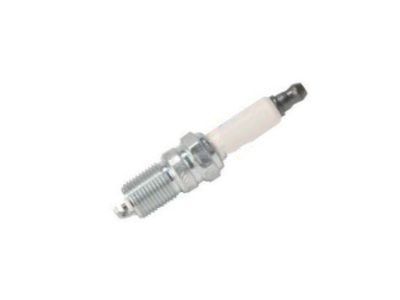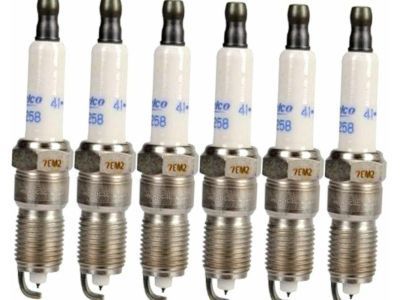My Garage
My Account
Cart
Genuine Cadillac Fleetwood Spark Plug
Ignition Spark Plug- Select Vehicle by Model
- Select Vehicle by VIN
Select Vehicle by Model
orMake
Model
Year
Select Vehicle by VIN
For the most accurate results, select vehicle by your VIN (Vehicle Identification Number).
14 Spark Plugs found
Cadillac Fleetwood Spark Plug Asm
Part Number: 19301808$7.79 MSRP: $13.98You Save: $6.19 (45%)Ships in 1-3 Business DaysCadillac Fleetwood Spark Plug
Part Number: 19158029$7.36 MSRP: $13.20You Save: $5.84 (45%)Ships in 1-3 Business DaysCadillac Fleetwood Spark Plug Asm,Gasoline Engine Ignition
Part Number: 19355205$2.33 MSRP: $4.18You Save: $1.85 (45%)Ships in 1-3 Business DaysCadillac Fleetwood Spark Plug Asm
Part Number: 19300875$7.36 MSRP: $13.20You Save: $5.84 (45%)Ships in 1-3 Business DaysCadillac Fleetwood Spark Plug Asm
Part Number: 19301813$8.04 MSRP: $14.42You Save: $6.38 (45%)Ships in 1-3 Business DaysCadillac Fleetwood Spark Plug Asm
Part Number: 19354416$2.33 MSRP: $4.18You Save: $1.85 (45%)Ships in 1-3 Business DaysCadillac Fleetwood Spark Plug Asm,Gasoline Engine Ignition
Part Number: 19354430$2.33 MSRP: $4.18You Save: $1.85 (45%)Ships in 1-3 Business DaysCadillac Fleetwood Spark Plug Asm,Gasoline Engine Ignition
Part Number: 19354415$2.33 MSRP: $4.18You Save: $1.85 (45%)Ships in 1-3 Business DaysCadillac Fleetwood Spark Plug Asm,Gasoline Engine Ignition
Part Number: 19366108$2.33 MSRP: $4.18You Save: $1.85 (45%)Ships in 1-3 Business DaysCadillac Fleetwood SPARK PLUG ASM,GAS ENG IGN
Part Number: 19418152$2.33 MSRP: $4.18You Save: $1.85 (45%)Ships in 1-3 Business DaysCadillac Fleetwood Spark Plug Asm
Part Number: 19208523$6.59 MSRP: $11.82You Save: $5.23 (45%)Ships in 1-3 Business Days
Cadillac Fleetwood Spark Plug
The Spark Plug of Cadillac Fleetwood vehicles is an important part in combustion system where it generates a spark that will ignite the air/fuel mixture in the vehicle's engine. This spark plug has the central electrode, metal terminal and ceramic insulator that is shrink-wrapped in steel shell. Copper core is one type of spark plug, and it is not as durable as platinum, and similar to that, spark plugs have iridium too. The function of the ignition coil is to produce high voltage that makes the spark needed for proper running of the engine. Again, spark plug reach, heat range, and the type of electrodes are chosen based on the application and ignition system to enhance combustion as well as performance of the engine. Cadillac Fleetwood vehicle owners have complained of misfires, rough idle, and poor fuel economy and this can be attributed to faulty spark plugs hence the need to perform regular maintenance and replacements of the spark plugs.
Each OEM Cadillac Fleetwood Spark Plug we offer is competitively priced and comes with the assurance of the manufacturer's warranty for the part. Furthermore, we guarantee the speedy delivery of your orders right to your doorstep. Our hassle-free return policy is also in place for your peace of mind.
Cadillac Fleetwood Spark Plug Parts Questions & Experts Answers
- Q: What are the key points about spark plugs and their maintenance on Cadillac Fleetwood?A: Resistor type, tapered seat spark plugs are used, with some applications using a platinum spark plug, usually designated by a 'P' suffix in the part number. Normal service is a mixture of idling, slow speed, and high-speed driving, with occasional intermittent high-speed driving needed for good spark plug performance. Worn or dirty spark plugs may operate satisfactorily at idling speed, but often fail at higher RPM. A typical spark plug consists of a metal shell surrounding a ceramic insulator, with a metal electrode extending downward through the center of the insulator. The spark plug does not produce a spark but provides a gap across which the current can arc. Spark plug heat range is the ability of the plug to dissipate heat. The general rule of thumb for choosing the correct heat range is: if most of your driving is long distance, high-speed travel, use a colder plug; if most of your driving is stop and go, use a hotter plug. A set of standard spark plugs usually requires replacement after about 30,000 miles (48,000 km), depending on your style of driving. When you're removing spark plugs, work on one at a time. Don't start by removing the plug wires all at once because, unless you number them, they may become mixed up. Check the plugs for deposits and wear. If they are not going to be replaced, clean the plugs thoroughly. Plugs can be cleaned on a spark plug cleaning machine, or you can do an acceptable job of cleaning with a stiff brush. Check spark plug gap before installation. The ground electrode must be parallel to the center electrode, and the specified size wire gauge must pass between the electrodes with a slight drag.


















